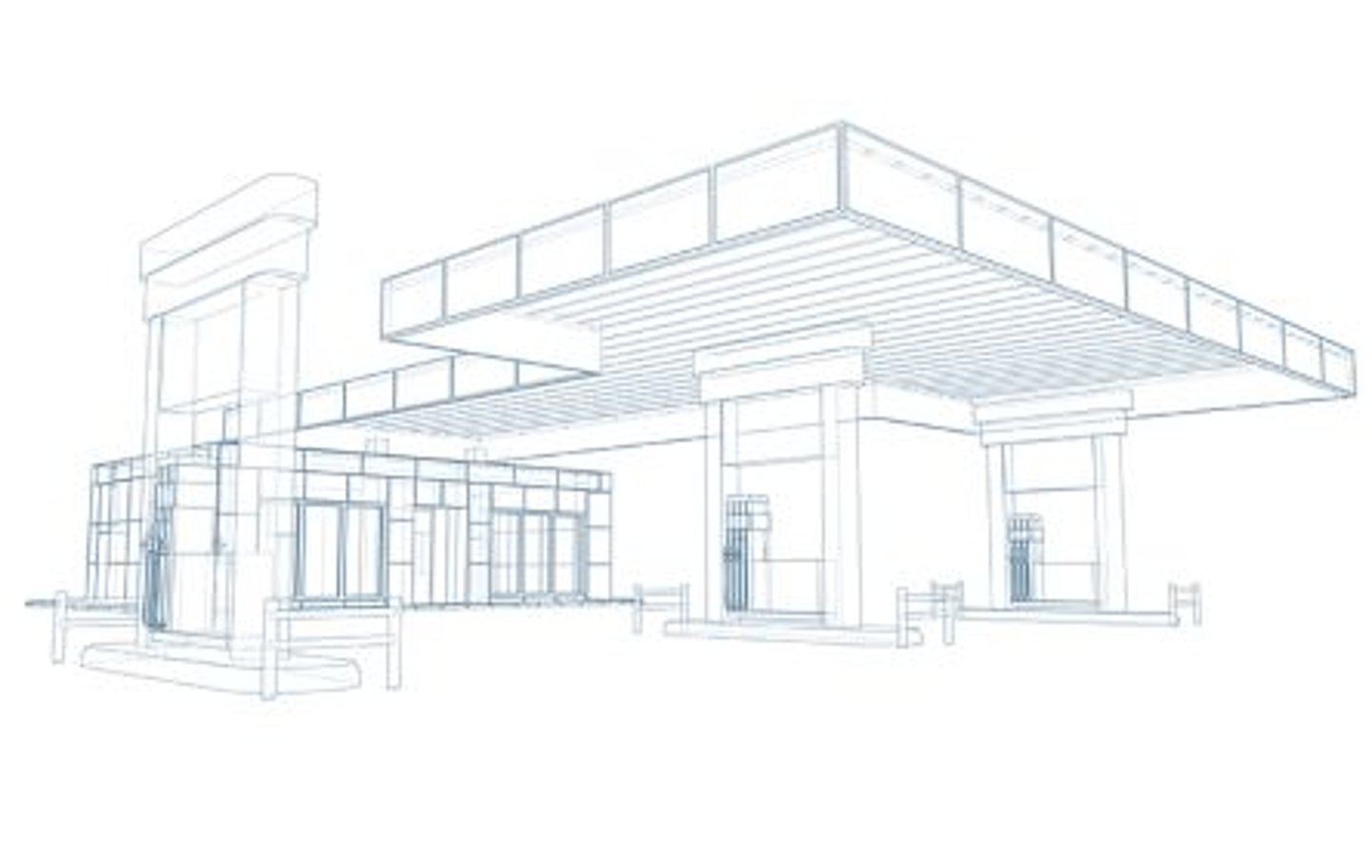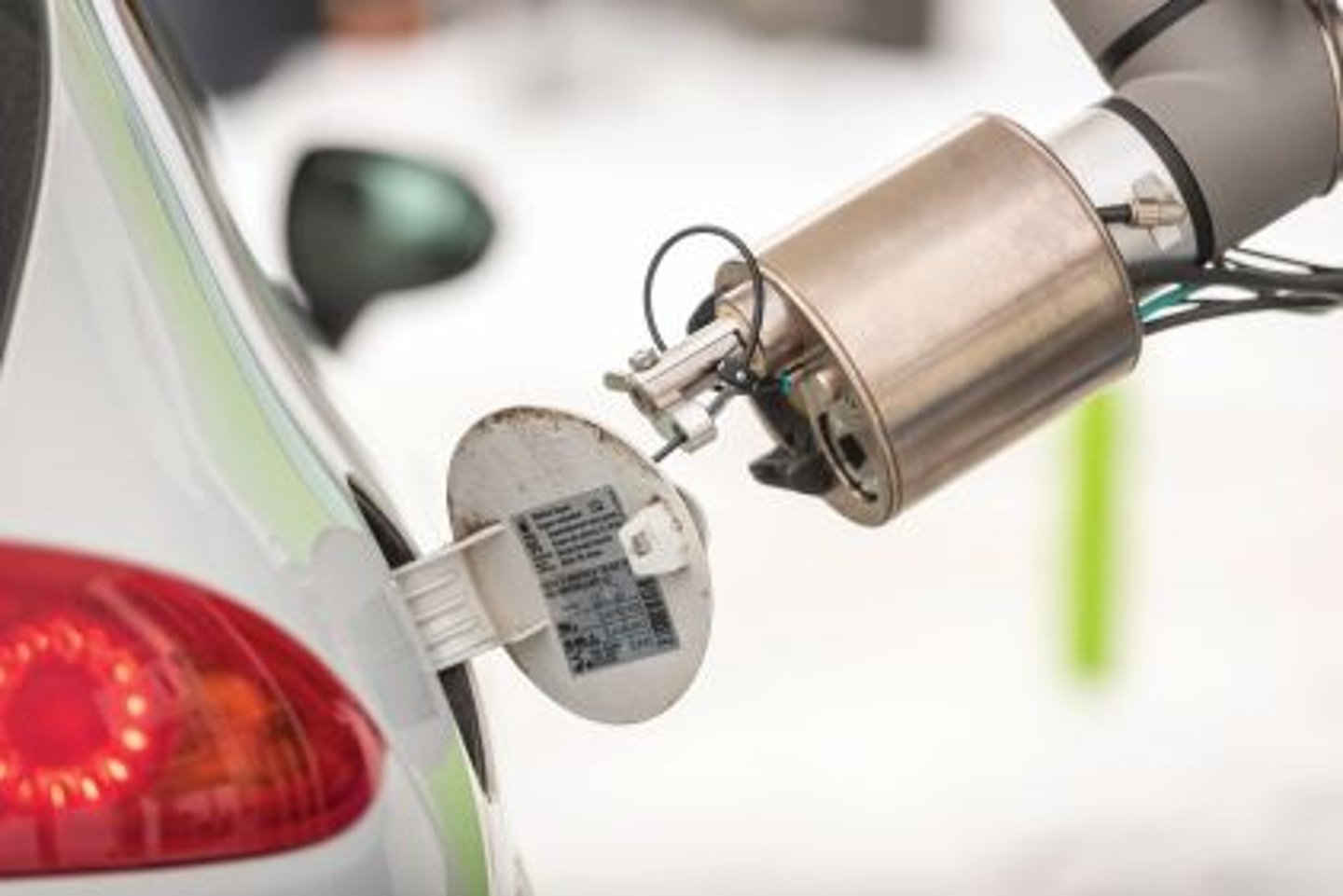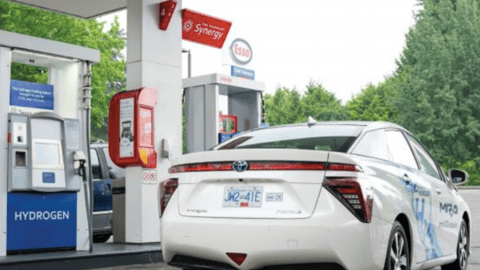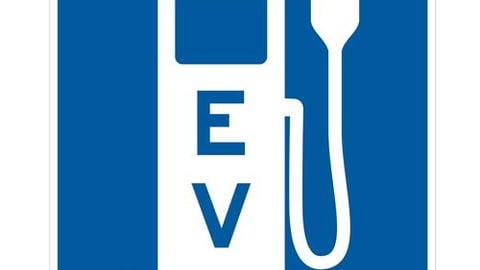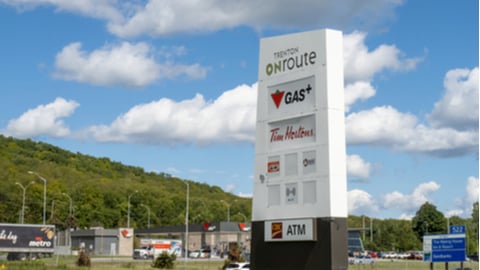First impressions count at the forecourt
As Chris Soucie, director of sales and marketing at McCowan Design & Manufacturing, tells clients, “your site’s forecourt is the first impression customers get of your business.”
From lighting to layout and new features like EV charging stations, the forecourt is in the midst of major modernization and evolution, particularly as fuel stations look to remake themselves as longer-visit destinations.
Experts in retail fuel design share the big changes they are seeing in the forecourt today, and those on the horizon.
Light of day
Flattering indoor lighting helps “ring the cash register” by making merchandise visible and vibrant. If you want to make the fuel forefront and/or fuel island a 24-hour branding and revenue driver, as well, the same holds true.
Lighting manufacturers recommend light sources with a high CRI (colour rendering index), which is a measure on a scale of 0 to 100 of a source’s ability to reproduce the colours of different objects like natural light. At the bottom of the scale, colours appear duller than in daytime and similar to one another, reducing eye-catching contrast. Lighting with a 90 or higher CRI (an “excellent” rating) performs like daylight in illuminating objects.
Jim Rodd, sales manager at Red Leonard Associates, which represents manufacturers in the petroleum industry, is a big fan of Cree Lighting. According to Cree, its patented TrueWhite Technology high-CRI LED lighting keeps brand colours, logos and canopy columns as well as promotional signage looking the same day and night.
“Instead of basic lights, we’re using these fancier lights,” says Rodd, who adds that cool white lights also provide a sense of security versus fluorescent overhead illumination.
Location, location, location
Late last year, Parkland said it would increase the number of ultra-fast EV charging stations at On the Run locations along highways and destinations between Vancouver Island and Calgary from 25 to 50, and that they would be positioned “where it’s easy to get in the convenience store,” Darren Smart, Parkland’s SVP of energy transition and corporate development, said in an interview earlier this year. “There are lots of examples in the market where the charger’s off in the corner in a poorly lit area, and that’s where we feel the market has done a disservice to EV customers.”
A Parkland site in North Vancouver, for instance, now features EV chargers just a five-second stroll to the On the Run.
However, installing or relocating EV chargers in close proximity to a convenience store can be a challenging investment and undertaking, notes Linda Thompson, managing partner at Fuel Partners.
“Often it is not feasible, practical or possible to have EV chargers near the store or forecourt. There are a lot of safety and regulation factors to consider, including the compatibility of the wiring required for fuel equipment versus wiring requirements for EV chargers,” she explains. “In retrofit designs, often the placement of chargers is done in the most cost-effective manner. This often means locating EV chargers in an area where the construction will not impact the existing gas or convenience businesses.”
Given those limitations, fuel operators have been thinking outside of the box in building new amenities around EV charging stations. For instance, a Petro-Canada Cookstown station in Ontario on Highway 89, just off Highway 400, features a fenced-in, off-leash dog park next to EV chargers.
EV add-ons
Regardless of their onsite placement, EV stations are now seeing service add-ons that customers don’t even get directly in front of the fuel pump.
For instance, an On the Run location in Abbotsford, B.C. has been retrofitted with an EV charging station complete with overhead coverings, and handy use of vacuums and squeegee and wash buckets, if drivers feel so inclined to clean their vehicle as it charges.
McCowan, meanwhile, is in the midst of investing in and launching newly designed forecourt products. “EV is driving change within the entire landscape of gas station design and forecourt formats,” says Soucie. “Forecourt products like trash and recycle receptacles designs are being forced to evolve so they don’t look out of place beside a modern style EV charging terminal.”
In April, for instance, McCowan launched the MM-653 Display merchandiser, which is sleek, modern-looking, high capacity and rust resistant, which Soucie says is “every feature our clients are asking to provide in any new forecourt solution.”
Thompson, meanwhile, says “in the near feature, expect to see more shade canopies over charging stations.”
A canopy can serve as more than protection from the elements, while making a charging station look more inviting.
Minnesota, Fla.- and Sault Ste. Marie, Ont.-based Heliene, for example, manufactures a solar canopy that helps fuel stations reduce costs and carbon emissions associated with EV charging.
Speaking of solar additions, Irving Oil’s Salisbury Big Stop in New Brunswick (which includes a fuel station, Circle K, restaurant, Subway and EV charging station) has made an eye-popping, conversation-starting addition, a “solar flower” called Smartflower. Manufactured by Boston-based Energy Management, the solar flower’s 12 photovoltaic petals open from a closed position every morning to collect solar energy. It ”generates enough power to offset the electricity required by all the fuel pumps on site, offsetting 1.5 tonnes of carbon dioxide each year,” says Irving Oil.
Robotic fuelling
Rodd is impressed by mobile payment services at the fuel pump.
“One area that I am not involved in, but that I have found revolutionary, is the ability to authorize dispensers and pay for gasoline at both Petro-Canada and Shell stations using their app on your phone,” he says, “This changes the whole pumping experience. No need to insert the credit card or points card, just select the pump on your phone, and in a few seconds, it is authorized.”
Perhaps not far behind: automated, robotic fuelling so that drivers don’t have to get out of their vehicle at all.
Autofuel in Denmark, for instance, has pioneered a solution in which a robotic arm is mounted to existing fuel dispensers and activated through vehicle recognition or an app to fill up a vehicle.
"We have been operating our automated refueling system at commercial gas stations in Finland for almost two years now and it has been generating great results in terms of customer satisfaction,” says Thor Olsen, co-founder and CEO at Autofuel. “We are finding once they get used to the system it becomes habitual for customers-they make the effort to go to a station with a robot. We have spent the past two years maturing the product and are now ready to mass produce it."
The robotic system can also be used for EV and hydrogen charging. If the solution makes the entire manual refuelling process optional, if not ancient history (particularly if self-driving vehicles take off in the future), this could lead to a major redesign of the fuel dispenser.
Clearly, the evolution in fuel forecourt design has only just begun.

